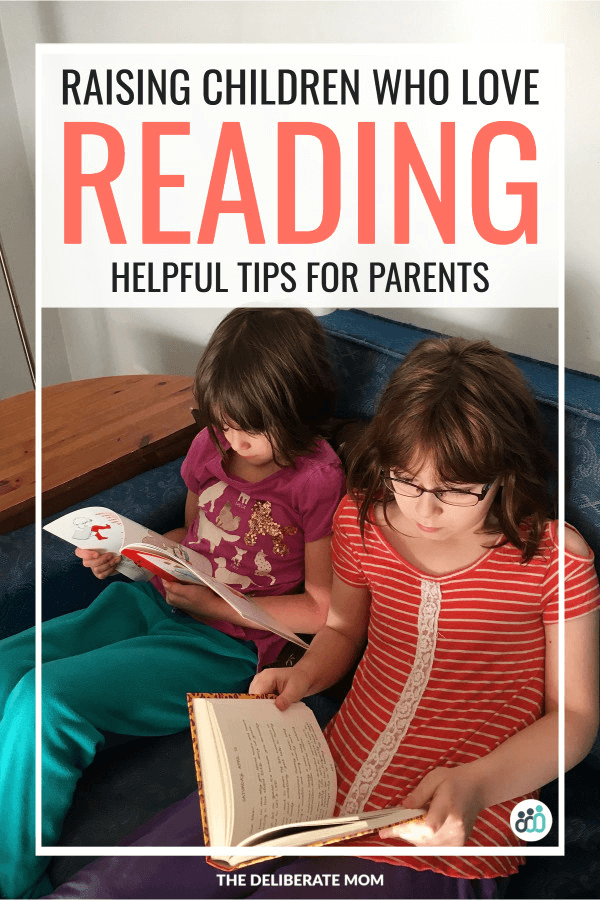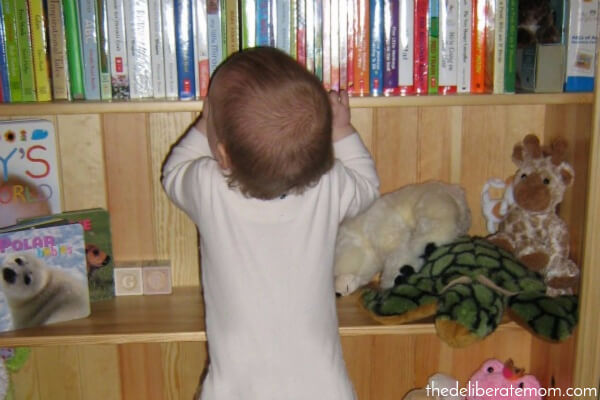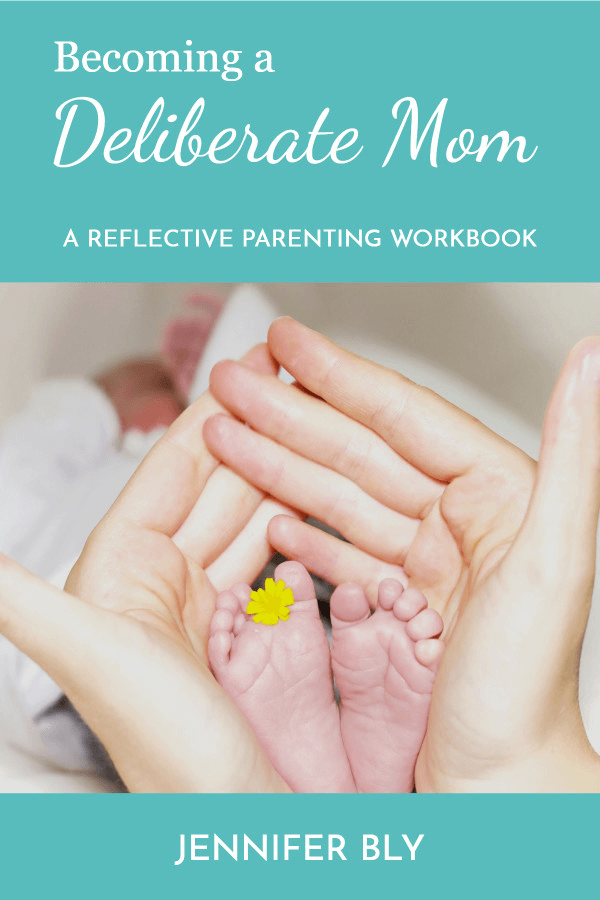Do you want to raise children who love to read? As an early childhood educator and a homeschooling mom, I’ve had the opportunity to observe young children at various developmental stages in their lives. A universal similarity that I’ve noticed in almost all children is that they love books.
What is it that makes books so appealing to young children? Perhaps it’s the colourful pictures or the one-on-one time that is shared with an adult. Perhaps it’s the rhythmic movement of a story or the setting that is cast in the story. Whatever the reason… children like books.
As a parent, it is our responsibility to foster a love for literacy in our children. How do we do this? Here are some tips for how to raise a child who loves to read!
Check out these fabulous tips on how to raise children who love to read! Click To Tweet
Introduce books and reading at infancy.
It’s never too early to start reading to your children. There are so many types of books that are especially made for infants. From board books to cloth books, the selection is great! Read daily to your infant. Let him/her interact with books. Whether your child holds the book or chews the book, their interaction with books is critical to building an interest in reading.
Build your child’s library.
It’s important that your child has books that he/she can call his or her own. There are cost-effective ways to do this as well.
– Books can be purchased second-hand from a used book store.
– Consider having a book registry instead of or in addition to a baby registry.
– Request that people attending your baby shower bring you a book to help build your library.
– Ask friends or family who have older children if they would consider selling/donating their old books to you.
– From the moment you find out you’re pregnant, make a commitment to buy at least one book every month and before you know it; your child’s library will be overflowing!
– Request books as gifts. Sometimes the amount of gifts for birthdays and/or Christmas can be overwhelming. Provide family and friends with a book list so they can contribute to building your child’s library.

Read the book from front to back.
Your child will only understand the value of words if you read them. Read the title of the book. Read the author’s and illustrator’s names. Do not change text, read the book as it is written.
Encourage your child to be an engaged listener.
While reading aloud to your children ask him/her various questions about the book while reading it. For example, “I wonder what’s going to happen next?” or “I wonder how the little boy feels?”
Read the same book many times.
Repetition of the story helps your child understand the link between the text and the story that is being told. My daughter had memorized her first book shortly after she turned two. She was able to do this because we read that book repeatedly to her. Even if you’re bored with reading the same story over and over again, if your child wants it… read it!
Provide some variety.
Too many books at the same time can be overwhelming. Our family has a shelf full of cardboard magazine file boxes. Each file box has ten to fifteen various children’s books in it.
We purposely divided up the books so that each box would have a variety of picture books, at least one book on emotions (e.g. Bear Feels Scared), a numerical book (e.g. Click, Clack, Splish, Splash) and an alphabet book (e.g. Chicka, Chicka, Boom, Boom). Every couple of weeks we put out a new file box of books. This rotation and variety keeps us and our daughter interested in the books.
Check out the library!
Bring your child to the local library. Some libraries have group reading times that parents can attend with their children. This will provide an opportunity to hear stories as told by a different adult. Also, you and your child will get exposure to a variety of books that you otherwise would not have considered. Also, while at the library, allow your child to select a couple of books that you can borrow.
Investigate what experts say are the best books to read.
Libraries and literacy groups regularly publish lists of the top books for children at different developmental stages. Investigate these lists and the book recommendations.
Be a positive role-model.
Demonstrate your own interest in reading. Perhaps you can allocate 10 – 20 minutes of family reading time every night. During this time, family members gather in a room and read their own respective books.
Include books in your child’s play.
If your child is showing an interest in toy cars, perhaps you can provide a few interesting car books in their play space. There are some great resources available to parents and early childhood educators to help them extend the enjoyment of a book into various play activities. My personal favourite is Picture Book Activities: Fun and Games for Preschoolers Based on 50 Favorite Children’s Books by Trish Kuffner.
Literacy is the foundation of future education. I hope that these tips help you raise children who love to read.










You know I love to read and have also passed my love of books down to my own girls. I wrote similar article on my blog last year with similar advice. So, I couldn’t agree with you more on all of the above and than some. Great advice and thanks for sharing. Have a wonderful week ahead now!! :)
I know you’re a HUGE reader Janine! It’s not surprising you create an atmosphere for appreciation of books with your girls.
Those are all great tips. I actually started with Madison as an infant and she just loves it now. We read almost every day and it’s something that she looks forward. Her love of reading is what I just love about her.
My oldest daughter is a HUGE reader. We started when she was a baby and we would read 3-4 books to her every night before bed AND we would read frequently throughout the day. I know that starting early is key. We only had time to read one book per night with my youngest and a book or two during the day. I sometimes wonder if that’s why she’s not as into reading as my oldest… although they are opposite in every way – so who knows. lol
Excellent ideas, Jennifer! I’ll be sharing this everywhere. You always have such helpful and insightful posts for parents. <3
Thank you so much Chris! I’m delighted you found this helpful – and I appreciate you sharing in your community.
xoxo
Scarlet got her first library card on Saturday and she was SO EXCITED. Suddenly it’s books everything with her. And Des too! I’m so glad we started early and that they have always truly seen my love of reading.
That first library card is a BIG deal! So awesome.